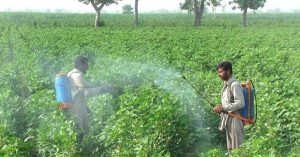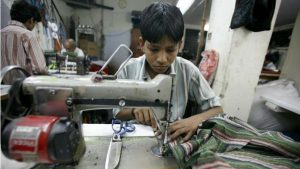REQUIREMENT: The AS Sustainability Coalition is responsible for maintaining a reference list of recommended clothing vendors.
RECOMMENDATION: Due to the high social and environmental impacts of the clothing industry, AS groups should limit clothing purchases only to what is absolutely necessary.
The clothing industry impacts social and environmental conditions worldwide. In order to reduce production costs, a high proportion of manufacturing occurs in factories with very low wages and very poor working conditions. Cotton production is also extremely taxing on the environment, as the cotton required for a single standard t-shirt requires about 1/3 of a cup of pesticides and 700 gallons of water (enough to run your shower for 6 hours).
Obviously, clothing is necessary. Given typical production processes, however, it is critical that we avoid purchasing or giving out items (typically t-shirts) that ultimately won’t be used and go to waste. It is also important to purchase clothing that is manufactured in ways that prioritize worker and environmental safety rather than minimizing cost.
What you should do:
- Take a look at some of the free t-shirts you’ve gotten during your time at UCSB. Which do you wear most often? What do you like about them? Incorporate this into your plan.
- Select a high-quality shirt that meets the A.S. sustainability policy, such as those offered by our vendors here or on the bottom of this page. People are much more likely to wear a shirt that fits well and is comfortable, so don’t just pick the cheapest option.
- Decide how you will distribute items and when. People generally value a shirt more and are more likely to wear it if they have a strong connection to the organization rather than if it is handed out freely from a table, so don’t waste your investment by passing them out to anyone willing to take one.
- Create your design. Be original, but make sure it’s something that will have wide appeal and that next year’s students will still like. Shirts without dates can be distributed for multiple years, so you can still get the benefit of ordering a larger number even if you only give out a portion this year.
- Decide how many shirts you will need. If distributed carefully, you can make a small number of shirts last for a long time, saving your organization a lot of money and reducing environmental and social impact.
- Place your order, and enjoy!
Helpful tip:
When buying clothing in your personal life, you can save a lot of money and resources by buying secondhand. Online thrift stores like ThredUp, Poshmark, and Swap offer high-end items at much lower prices, often with minimal wear and tear. Locally, many students buy and sell items on the UCSB Free and For Sale Facebook group.


